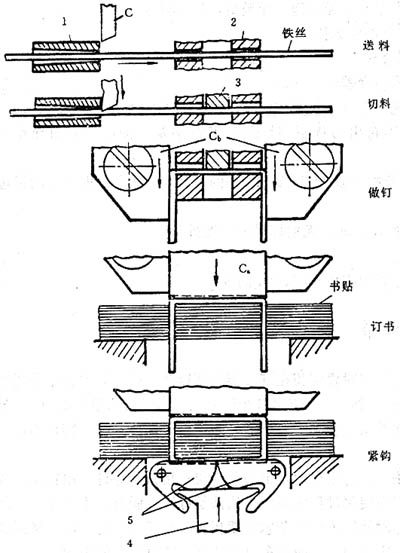The saddle stitching process is one of the book binding forms. The book is named after the book is straddled on the book shelf. The saddle-stitched book is made with the cover book. When the book is affixed, the folded book begins with a middle quote, and then it is placed on the stapler work table. On the triangular support, finally cover the top. At the time of the book, they were threaded into the inside of the spine of the book and creased outside. The book was curbed on three sides and became ready for reading.
Saddle stitching is a relatively simple method of bookbinding. It has a short process flow and a fast publishing speed. It is made of iron wire, which uses less material and has a low cost. The book is easy to open and close and easy to read, but the cover is easy to use during the course of use. The ties are off and difficult to keep. Therefore, the saddle stitch binding method is often used to bind books such as magazines, periodicals, and booklets, which have a relatively short preservation time. Because of the saddle stitch method, the thickness of the product is subject to certain restrictions. Generally, a maximum of 100 pages can be bound.
There are two types of horse riding staplers that are commonly used: one is a semi-automatic saddle stitcher; the other is an all-natural riding saddle stitcher. The automatic motorcyclist stapler linkage engine is a multi-step linkage binding machine that binds a variety of graphic magazines, magazines, periodicals, etc. with wire, and has a wide range of uses and high production efficiency.
First, semi-automatic saddle stitcher and staple craft
The semi-automatic saddle stitcher is composed of three main parts: the cover sheet delivery chain, the stapler, and the book receiving device. It completes the operations of two sets of stitching and saddle stitching. The process of collating and stapling is: manually opening the folded pages and placing them on the triangular support of the collection chain in turn. There is a uniform rotating transmission chain under the tripod, pushing the pages equidistantly on the chain. The pages of the hitting book are sent to the stapler for the book. After the book is submitted to the book receiving device, after counting, manually tied, pending cutting.
The working process of the saddle-stitching head is divided into five processes, namely feeding, cutting, bookbinding, bookbinding, and hooking, as shown in Figure 5-11. The stapler head usually has 4 groups, and the format of the book can be increased or decreased according to the book. For example, a book with 32 pairs of books, a stapler with 4 heads, a book with 16 bills, and a stapler with 2 heads. At the time of the book, adjust the stapler's heading according to the size of the book, so that the position of the wire nails is kept at a distance from the sky and the feet.
There are two kinds of saddle stitching methods, one is to wear a book at the same position of each signature, which is called alignment; the other is to cross the nail between the label and the stitch, as shown in Figure 5-12. . The staggered-stitching mode allows the intertwining of the legs between the placard and the placard, which is improved compared to the case where the back of the book is higher than the front mouth when the book is used, which is favorable for the three-side cutting of the next procedure and makes the books and books smooth. accumulation.

Figure 5-11 Working process of a saddle stitcher head
1-cutting shaft 2 - forming hook 3 - bite hook 4 - top pin 5 - leg

Figure 5-12 Horseback riding
a-Set b-Interleaving
Semi-automatic saddle stitchers need to manually page, stapled books and magazines must be bundled, to be cut, and stacking is required between processes. Therefore, it is time-consuming, labor-intensive, and labor-intensive. Production efficiency is not high.
Slate is a rock with a plate-like structure and basically no re-crystallization. It is a metamorphic rock.
The original rock is argillaceous, silty or neutral tuff, which can be stripped along the direction of the slab.
The color of the slate varies with the impurities it contains.Slate is a characteristic slab-like structure.
Shallow metamorphic rocks are formed by clay stone, silty sedimentary rocks or medium-acid tuff rocks and sedimentary tuff.
Slate Board,Nature Slate Board,Nature Slate Cutting Board,Nature Slate
Liveon Industrial Co.,Ltd. , http://www.liveonkitchen.com